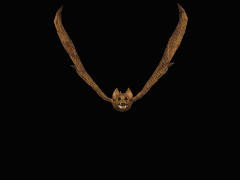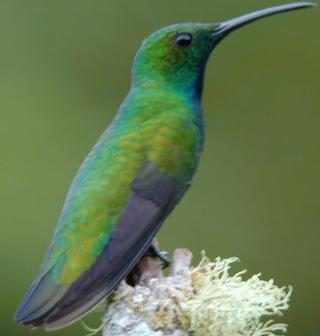


|
Trochilidae:
Hummingbirds are small birds in the family Trochilidae. They are known for their ability to hover in mid-air by rapidly flapping their wings, 15 to 80 times per second (depending on the species). Capable of sustained hovering, the hummingbird has the ability to fly deliberately backwards or vertically, and to maintain position while drinking from flower blossoms. They are named for the characteristic hum made by their wings. Hummingbirds are attracted to many flowering plants—shrimp plants, Heliconia, bromeliads, verbenas, fuchsias, many penstemons—especially those with red flowers. They feed on the nectar of these plants and are important pollinators, especially of deep-throated flowers. Most species of hummingbird also take insects, especially when feeding young. The Bee Hummingbird (Mellisuga helenae) is the smallest bird in the world, weighing 1.8 grams (0.06 ounces). A more typical hummingbird, such as the Rufous Hummingbird (Selasphorus rufus), weighs approximately 3 g (0.106 ounces) and has a length of 10-12 cm (3.5-4 inches). The largest hummingbird is the Giant Hummingbird (Patagona gigas), with some individuals weighing as much as 24 grams (0.85 ounces). Most male hummingbirds take no part in nesting. Most species make a neatly woven cup in a tree branch. Two white eggs are laid, which despite being the smallest of all bird eggs, are in fact large relative to the hummingbird's adult size. Incubation is typically 14-19 days. |
